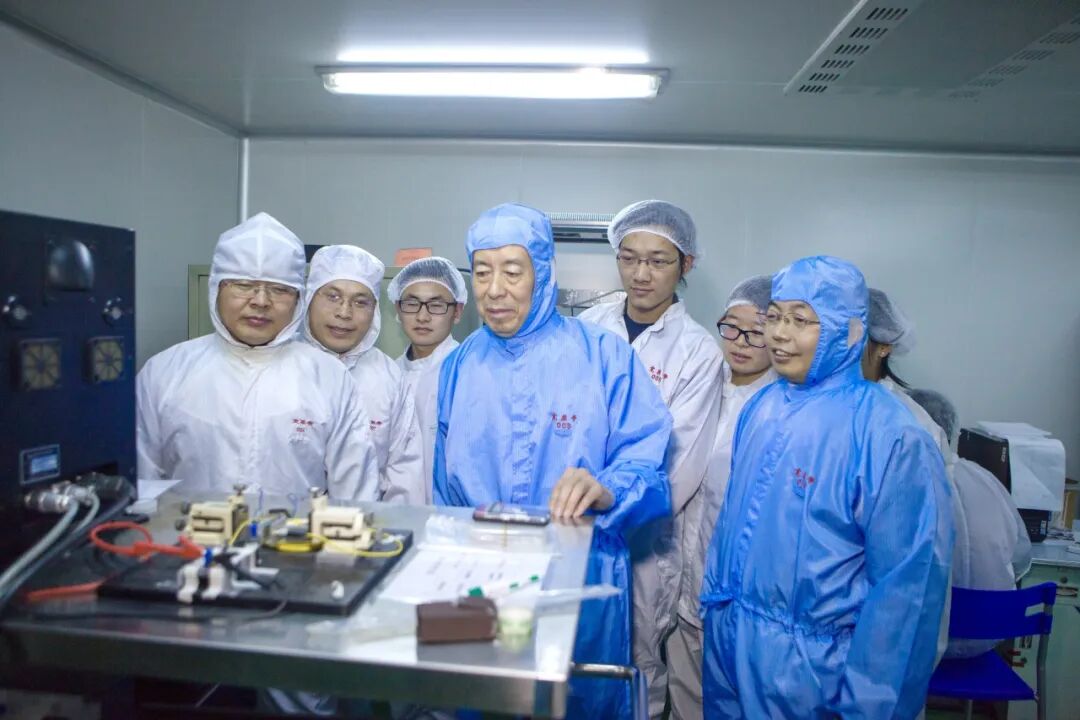
【Member News】The Overheating Chips is Saved! The Xidian University Team used Diamonds to Enable Gallium Oxide to Keep Cool
日期:2025-11-07阅读:13

Star Material Runs into Trouble
Gallium Oxide is a highly promising semiconductor, hailed as the "star material" for next-generation high-power electronic devices. With its ability to withstand ultra-high voltages and relatively low cost, it finds applications in electric vehicles, rail transit, 5G/6G base stations, smart grids, and aerospace.
However, Gallium Oxide has a critical flaw: poor heat dissipation. Its thermal conductivity is only one-fifth that of silicon. Once in operation, it quickly heats up, which can cause device damage and performance degradation—like putting a tiny radiator on a sports car: the engine overheats and cannot perform optimally.
This heat issue leads to sudden drops in device performance and shortened lifespans, forming the biggest obstacle to the practical application of ultra-wide bandgap semiconductors. Thermal management has thus become the key " stranglehold" determining whether Gallium Oxide can move beyond the lab into large-scale industrial use. As Ning Jing notes, the development of such materials is crucial for boosting a country’s competitiveness in global energy and high-end manufacturing, as well as for breaking through key technological bottlenecks and building an independent, controllable industrial chain.
How to cool it down? The research team initially considered diamond, the "king of heat conduction," for its exceptional thermal dissipation. Yet single-crystal diamond is small and expensive, limiting large-scale application. The team then turned to lower-cost polycrystalline diamond—but this introduced a core problem: when Gallium Oxide films are grown on polycrystalline substrates, the material tends to grow randomly, with disordered crystal orientations, leading to cracks, stress, and greatly reduced heat dissipation efficiency.
Thermal Resistance Slashed, Performance Doubled
The team ultimately introduced graphene as an intermediate buffer layer. Acting like an excellent “translator,” it alleviates the “communication barrier” between the two materials and shields the roughness of the polycrystalline substrate, allowing high-quality, flat Gallium Oxide films to grow on polycrystalline diamond.
They also applied an “oxygen-lattice synergistic control” technique, finely adjusting oxygen flow and atomic arrangement to achieve stable epitaxial growth of high-quality Gallium Oxide films. This prevents disordered growth and significantly reduces thermal stress.
Team member Yang Zhichun explained that this approach not only solved the growth problem but also brought remarkable thermal performance. “The graphene layer acts like a lubricant, releasing interfacial thermal stress and enabling efficient heat transfer. Experiments show that the thermal resistance between Gallium Oxide and diamond is only 2.82 m²·K/GW, roughly one-tenth of what conventional techniques achieve.”
Experiments confirmed that photodetectors built on this structure—similar to camera sensors—exhibited outstanding performance: a light-to-dark current ratio up to 10⁶, extremely high contrast and clarity, and a responsivity of 210 A/W, effectively doubling sensitivity. This means the devices not only manage heat efficiently but also demonstrate superior optoelectronic performance.
This breakthrough goes beyond the laboratory, addressing the “self-heating” issue of Gallium Oxide devices. By enabling efficient combine between high-thermal-conductivity diamond and Gallium Oxide, it provides a new strategy to tackle thermal challenges and lays the foundation for future high-performance, high-reliability electronic devices.
Building on this technology, the team developed a new van der Waals polarization-engineered heterointegration method, successfully growing high-quality GaN epitaxial layers on sapphire substrates. Using these layers, they fabricated high-performance GaN-based RF devices featuring high electron mobility, high saturation current density, and low cutoff current, suitable for high-frequency, high-power amplifiers.
Yang Zhichun noted, “This technology is expected to play a key role in 5G/6G communication base stations, radar systems, satellite communications, and other critical applications. The low-defect-density GaN epitaxial layers are also suitable for high-efficiency, high-frequency power switches in electric vehicle charging stations, data center power systems, and similar applications.”
Battling the “Lattice” Barrier
Ning Jing candidly admitted that the team faced numerous challenges during their research. Their focus was on van der Waals epitaxy of high-quality ultra-wide bandgap semiconductor films, with the core challenge being lattice mismatch.
In early 2024, the team encountered a major obstacle in device development. When powered on, local temperatures spiked, and device reliability sharply deteriorated, posing the greatest barrier to practical application. In a moment of uncertainty, Hao Yue and Zhang Jincheng led the team in relentless day-and-night discussions, ultimately settling on polycrystalline diamond substrates.
To tackle the lattice mismatch causing disordered nucleation, the team approached the problem from the material growth mechanism. In the following months, they worked in small specialized groups: the epitaxial growth team repeatedly adjusted parameters to precisely control growth conditions; the material characterization team worked late nights analyzing electron microscopy data to capture subtle changes in nucleation; and the device testing team monitored thermal resistance in real time, providing immediate feedback on performance.
During the 2025 Lunar New Year, half of the team stayed in the lab. On the fifth day of the new year, they attempted to use two-dimensional materials as an auxiliary layer, combined with oxygen plasma treatment of the substrate, finally catching a glimpse of a breakthrough.
Whenever the team hit a deadlock, they systematically reviewed the latest literature, and cross-group exchanges to overcome technical barriers never ceased. “Meticulous material control, innovative process design, and rigorous physical analysis were the keys to our success,” Ning Jing reflected. For the team, it was the repeated cycle of encountering failure, analyzing it, and surpassing it that continuously pushed them forward—painful yet rewarding, revealing the true charm of scientific research.
After publishing their results, several companies proactively sought collaboration. The team is now fully advancing the industrialization of the technology. In the future, they will focus on leveraging van der Waals epitaxy to solve challenges in cross-dimensional and cross-material heterointegration, conducting in-depth collaborations with relevant enterprises to enhance technological capabilities and establish national-level platforms.


